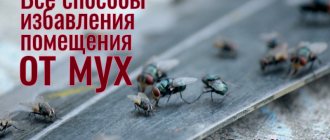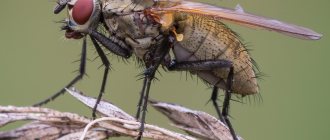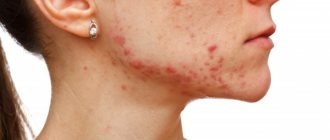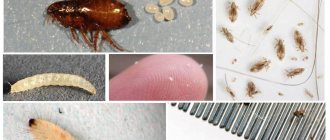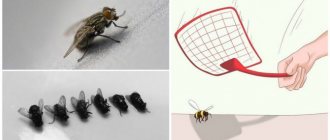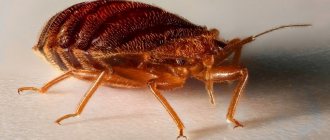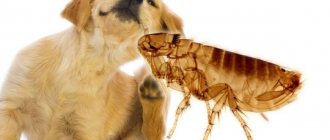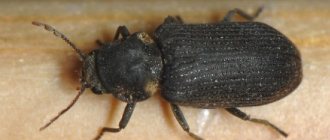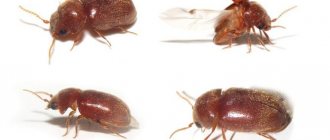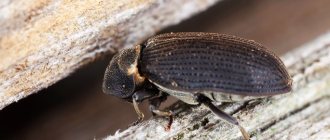The appearance of any type of insects in the apartment causes a lot of trouble for the owners. In addition to their unpleasant appearance, which you can judge from the photo, they can cause significant damage to products, items made of fur, wool, leather, as well as furniture and even books. One common kitchen bug is the bread grinder. This pest feeds on food supplies, especially loves flour and flour products, cereals, dried fruits, tea, tobacco, medicinal herbs and even animal food.
You can distinguish the bread borer from another type of beetle by its oblong brown body, 2-3 mm in size, covered with hairs. Its larvae have a curved shape and reach 5 mm in length. Both adults and their larvae can cause damage to products. They make holes in their food, eating everything that gets in their way. Therefore, if you find small holes in bread that resemble passages, there is no doubt that the presence of a grinder beetle is present.
What is a pest?
An adult bread grinder beetle has a cylindrical body shape, the length of which can range from 1.5 to 4 mm. The insect is characterized by weakly expressed dimorphism: males, as a rule, are smaller than females. The pronotum of the grinder is large and covers the head, which is retracted into the chest and directed forward and downward.
The thorax and elytra with characteristic grooves have a convex shape. Color can vary from light brown to red-brown. The body has short, thin, silky hairs. The pest is also endowed with short antennae with three widened and elongated segments.
The milky white eggs of the insect are oval in shape. The grayish colored faces are curved. Their body is fleshy and soft, covered with fine hairs on top. Small spines grow on the back.
The color of the head can be light or yellow-brown. The larva is distinguished by well-developed upper jaws with teeth. Unlike all body segments, the pectorals appear somewhat swollen. The anal fissure of the larva is longitudinal.
The legs are three-segmented, all three pairs are underdeveloped. The length of an adult larva is about 5.5 mm. The yellowish pupa is shorter than the larva, usually 2-4 mm long. Like an adult beetle, the head of the pupa is covered by the pronotum.
Life cycle
Most often, beetles can be found in June-July, but they live in warm rooms almost all year round. In temperate climates and unheated cold rooms, one or two generations may develop during the year. One female can lay about 60-70 eggs. The duration of the egg stage is 1-2 weeks, and the larval stage can last 4-20 weeks.
Once in the nutrient substrate, the larvae make passages there. During the development period, the larva molts 4-5 times. Pupation takes twelve to eighteen weeks.
An adult female lives 2-9 weeks. The duration of the life cycle depends on nutrition and air temperature and varies from 70 to 180 days. The acceptable temperature for the development of the bread grinder is considered to be +15…+34 °C, and the optimal temperature is +30 °C. In this case, the relative humidity should be in the range of 60-90%.
Notes
- ↑ Striganova B. R., Zakharov A. A. Five-language dictionary of animal names: Insects (Latin-Russian-English-German-French) / . - M.: RUSSO, 2000. - P. 126. - 1060 copies. — ISBN 5-88721-162-8.
- ↑ 1 2
- ↑ Ganiev M. M., Nedorezkov V. D., Sharipov Kh. G. Pests and diseases of grain and grain products during storage. - M.: KolosS, 2009. - 208 p.
- ↑ Volkov S.M., Zimin L.S., Rudenko D.K., Tupenevich S.M. Album of pests and diseases of agricultural crops in the non-chernozem zone of the European part of the USSR. - Moscow-Leningrad: State Publishing House of Agricultural Literature, 1955. - 488 p.
- ↑ 1 2 3 Sokolov E.A. Pests of stocks, their quarantine significance and control measures. , Orenburg: Printing House Dimur, 2004. , 104 p., ill.: 28 p.
- ↑ Christopher G. Majka, "The Derodontidae, Dermestidae, Bostrichidae, and Anobiidae of the Maritime Provinces of Canada (Coleoptera: Bostrichiformia)", Zootaxa, no 1573, 3 September 2007, p. 1-38
- ↑ 1 2 Rumyantsev, P.D. Barn pests and measures to combat them / Rumyantsev P.D.M.: Zagotizdat, 1940. - 320 p.
- ↑ 1 2 Ber V.G. Insects - pests of botanical collections and the fight against them. - Leningrad: Science, Leningrad branch, 1971. - 80 p.
- ↑ 1 2 3 Goryainov A. A. Barn pests and their control. - Moscow: publishing house New Agronomist, 1924. - 120 p.
- ↑ (English). Retrieved July 8, 2011. May 20, 2012.
- ↑ 1 2 Volkov S. M., Zimin L. S., Rudenko D. K., Tupenevich S. M. Album of pests and diseases of agricultural crops in the non-chernozem zone of the European part of the USSR. - Moscow-Leningrad: State Publishing House of Agricultural Literature, 1955. - 488 p.
- ↑ Zakladnoy G. A., Sokolov E. A., Kogteva E. F., Chirkov A. M. A guide to pests of grain stocks and space as a means of combating them. - M.: Publishing house MGOU, 2003. - 108 p.
- ↑ Bey-Bienko G. Ya., Bogdanov-Katkov N. N., Falkenshtein B Yu. et al. Agricultural entomology. Pests of agricultural crops and measures to combat them. Second, revised and expanded edition. - Moscow-Leningrad: Ogiz Selkhozgiz, 1949. - 764 p.
- ↑ 1 2 Feydengold V.B., Alekseeva L.V., Zakladnoy G.A. and others. Measures to combat grain losses during procurement, post-harvest processing and storage at elevators and grain receiving enterprises. – M.: DeLi print, 2007. – 320 p.
This page was last edited on June 11, 2016 at 5:18 pm.
Where does the bread grinder live?
If at least one pest is found in the house, you must immediately carefully check your food supplies. Most often, bread grinders can be found:
- in cereals;
- in pasta;
- in cookies, baked goods, sugar, candies, waffles and other confectionery products;
- in tea, coffee and cocoa;
- in dried fruits;
- in animal feed;
- in cigarettes and tobacco;
- in dry herbal mixtures;
- in books.
To completely get rid of the beetle, you need to find the place where it has settled. To do this, you should carefully examine all the products, and if small holes are found in them, then these are most likely passages into labyrinths where beetles and larvae have settled. If pests live in books, then fine dust can be found on their surfaces, since they eat one part of the paper and grind the other into dust.
It is worth noting that adult beetles do not need food. They have reserves accumulated during their stay in the larval stage. However, they still spoil the food by making moves in it so that they can get out.
Products that have been damaged by bread borer bugs should not be eaten or used to prepare any dishes. They contain waste from pests, which can cause allergies or poisoning. Contaminated food should be thrown away or fed to birds.
Why do bugs appear?
First, let's figure out where beetles come from, because they can often be found in kitchens where perfect order reigns. Insects enter the house through open windows and cracks in them. They can also be brought into the house along with contaminated products (for example, low-quality cereals).
For their habitat, beetles choose places with a large amount of easily accessible food; they often settle in dry trees. Poorly closed bags of cereals and flour attract them like a magnet. Pests will not refuse pasta, nuts, and dried fruits. They attack spices, sweeteners, and can settle in teas and coffee.
Although beetles do not carry diseases, they make life very difficult for the owners of the house in which they live
It is important to detect the presence of insects in time, otherwise they will scatter to other rooms. This is especially true if you eat outside of the kitchen and have a habit of accumulating dirty dishes (cups by the bed also count)
Delay in this case is fatal: bugs can be found among fabrics, papers, and furniture.
Bread grinder: how to get rid of the pest?
If the presence of a bread grinder in the house is detected, first you need to get rid of the source of infection by throwing spoiled food into the street or into the garbage chute. If the infestation is low, you can try to get rid of insects in less radical ways.
For example, the cereal should be sifted through a fine-mesh sieve, and then heated in the oven for an hour at a temperature of +70...+80°C. This method is not suitable for flour, which cannot be heated.
There is a simple method on how to get rid of the bread borer if it has infested beans or peas. First, the food must be filled with water, adding a pinch of salt. After some time, when the larvae emerge, they should be collected and thrown away, and the beans and cereals should simply be dried. Another way is to place contaminated food in the freezer. They must stay there for at least a day. Then the cereal should be fried in a frying pan over moderate heat for 10-15 minutes.
To protect surviving products from re-contamination, appropriate measures must be taken to do this. Uninfected cereals should be poured out of the bags and placed in jars with tight lids.
It is advisable to place them in the freezer for several days before doing this. If the grinders were found in jars, then they need to be soaked and left for half an hour in soapy water. After this, the container must be rinsed and dried well.
After fighting the bread grinder in the kitchen, tables, cabinets and window sills should be washed with soapy water with the addition of soda or a chlorine-containing substance. After this, you should thoroughly wipe everything with a vinegar solution.
It is necessary to pour boiling water over holes and any cracks in the floor, as well as fittings in cabinets. If there are holes in the wooden parts of the furniture or floor that can serve as a haven for pests, they must be sealed with sealant.
Prevention measures
To avoid encountering uninvited guests, do this:
- varnished or unpainted surfaces are wiped with a mixture of turpentine, wax and creolin (10:5:3), the solid components are melted;
- check all lumber, including ornamental pieces, frames, old furniture;
- plaster the walls with the addition of antiseptic components;
- Grinders love moisture, so they organize good ventilation and airing in the bathhouse and bathrooms.
If beetles are detected, all pieces of furniture and structure are checked. Taking timely measures will prevent the destruction of wood. But it is better to throw away severely damaged furniture. In particularly difficult cases, exterminators are called.
Use of folk and chemical remedies
There are several popular ways to get rid of the bread grinder in the kitchen. They are quite effective, and, unlike chemicals, they are absolutely safe for the health of people and animals:
- Use pyrethrum powder, which can be purchased at a pharmacy. It needs to be dissolved in a small amount of water and the resulting solution should be used to wipe down the kitchen cabinets every week until the insects are completely gone.
- Borax is often used to control many types of pests. To use it to get rid of the bread grinder in your apartment, you should make balls. To do this, you need to mix borax with pre-crushed millet and powdered sugar. The prepared balls are laid out in the corners of the kitchen furniture.
- Borax combined with yeast. This is a very simple but quite effective method of combating the grinder. Borax, yeast and sugar should be ground well and, scattered on cardboard, placed in places where insects are found.
The use of chemicals to combat this insect is highly undesirable. The main reason is that these beetles live mainly in food - after using toxic substances, they can no longer be used as food.
If you spray the cabinet with the packages tightly closed, there will be no effect, since the chemical will not be able to penetrate inside the box or bag. In addition, any chemical negatively affects the person carrying out the treatment.
The use of chemicals is justified only when the question arises of how to get rid of the bread borer beetle in books. If pests have occupied a bookshelf, then you can fight them by chemically treating the shelves and cabinets.
If books are severely damaged, they must be disposed of. In addition to using “chemistry”, a book can be saved by leaving it in the cold for a day (at a temperature no higher than -15°C).
Harmfulness
File:Stegobium paniceum chili.jpg Dry chili pepper damaged by bread grinder
File:Stegobium paniceum, dégats sur un livre.jpg Book pages damaged by bread borer larvae
The bread borer is widely known as a dangerous pest of various dry products of animal and plant origin (food, tobacco stocks and products made from them, pharmaceutical medicinal herbs). Both the larva and the imago are harmful. Despite the fact that the beetle does not feed, it causes significant damage to products, making many moves in them.
Most often it damages stocks of dried products: crackers, dried biscuits, biscuits, crushed grain products and mixed feed, dried fruits, medicinal raw materials (up to 50 types of dried medicinal plants and preparations from them), book bindings, herbariums and seed collections. During long-term storage it can develop on the surface of a grain mound.
The bread borer is the most severe pest of herbariums and other biological collections, including entomological ones.
The bread grinder received its English name “Drugstore beetle” due to the extreme polyphagous nature of its larva, which is not picky in its diet. The larvae can even feed on medicines, including poisonous ones: strychnine, aconite, ergot, belladonna and others.
Particularly noticeable harm is caused by the feeding of older larvae. Adult beetles do not feed and live off fat reserves accumulated during the larval stage. The larvae are able to feed on foods with low humidity (6% or less). At the same time, they penetrate into the food substrate and make passages inside it, filling them with their excrement.
When food is weakly infested, the development of generations usually occurs secretly within the food substrate itself, and the beetles usually do not come out. However, their detection in products is very difficult. At a high density of infection, beetles leave their food substrate in search of new habitats, and are easily found on the surface of the substrate they damage, on the walls and windows of rooms.
Eating bread contaminated with this pest is harmful to human health.
Preventive measures
There are a number of simple measures that can help prevent the appearance of a bread grinder in your home:
- if the quality of the purchased cereals is in doubt, they need to be dried in the oven for 8-10 minutes. They should be stored in jars with well-closing lids;
- It is advisable to store containers with cereals on shelves where sunlight penetrates - in case of infection, it inhibits the development of pest eggs;
- you need to pour cereal into jars only after a thorough inspection;
- It is important to keep the kitchen clean and periodically clean out the cabinets;
- Pests are well repelled by cloves of garlic or salt placed in a rag bag, which are placed in jars or bags of cereal. In addition, bay leaves can be laid out on the shelves, the smell of which grinders cannot stand;
- You should not buy excessive amounts of flour and cereals for future use;
- nuts, dried fruits and bread are best stored in the refrigerator;
- When storing bulk products in fabric bags, they should first be washed in a concentrated soda solution.
Basic methods of struggle
Agrotechnical
- alternate different crops on the site in the correct order. Plant related species as far apart as possible to prevent the spread of harmful insects.
- water as often as possible, since many pests do not like humidity.
- increase the durability and health of plants with proper care and the introduction of necessary nutrients - organic and mineral.
- After harvesting, remove all plant debris and burn it to destroy pests that have settled in for the winter.
- Autumn digging of the soil removes many harmful insects waiting out the winter in the soil.
Mechanical
It consists of using catching belts, manually removing spider nests, clutches of eggs, larvae and adult insects.
Chemical
Application of various insecticides, acaricides, fungicides. A properly selected drug can completely destroy the entire pest population. You should carefully read the instructions to prepare the desired concentration of the solution. A weak solution will not work, but a strong one can damage the plants, causing burns and deteriorating the quality of the fruit.
It is equally important to apply the product evenly to all parts of the plants, especially when using contact insecticides
Biological
Includes the attraction of natural enemies of pests, the use of preparations of biological origin, the use of herbal decoctions and infusions.
